Learning how to grow strawberries yourself is simple enough. Strawberries are easy to grow perennials, perfect even for beginner gardeners. Plus, you do not need a large yard. Strawberry plants will happily grow in vertical planters or pots on a balcony, providing you with a sweet crop throughout the summer.
Being located in Prince Edward Island, I have the good fortune of having access to freshly grown strawberries at the market starting in early June. If I want to make homemade strawberry jam or ice cream, I will usually buy the fresh strawberries in bulk.
But I have still decided to add a small strawberry patch to my homestead garden. There is nothing like the taste and satisfaction of freshly picked strawberries from your own garden.
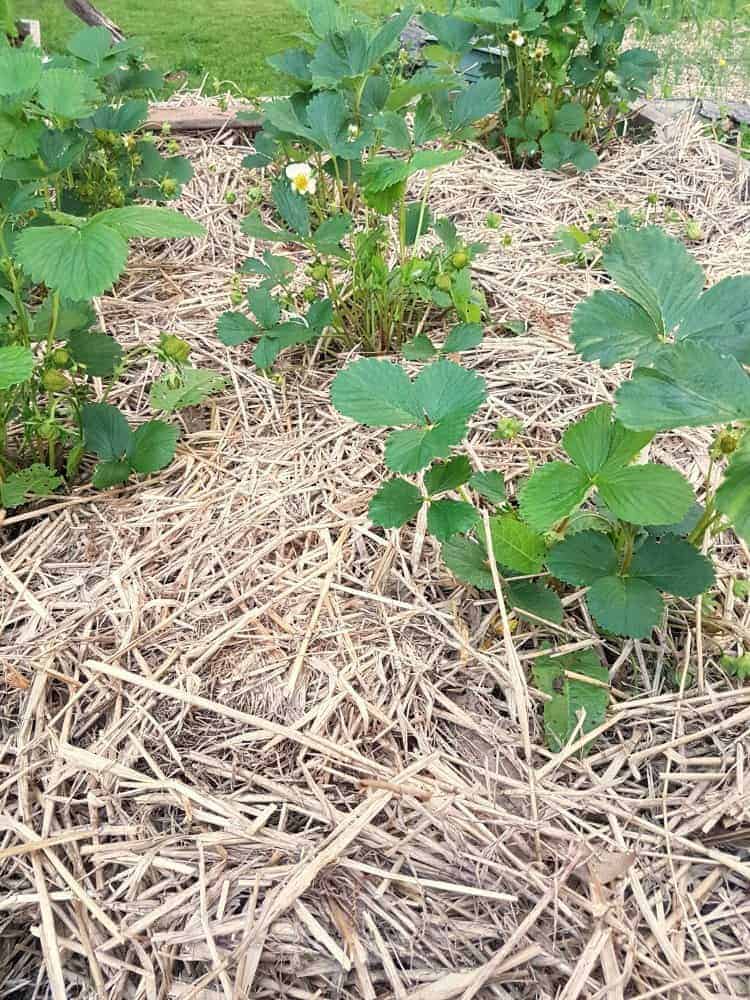
Featured in Strawberry Recipes to Enjoy In The Summer Season
You can easily grow strawberries in large quantities if you have a large sunny yard. Twenty-five to thirty plants are usually enough to feed a family of five with a good supply of homegrown strawberries.
But that's a lot of strawberry plants for a beginner! Planting six or seven plants in a raised garden bed, or even growing strawberries in pots, will produce a decent berry harvest - enough for snacking while out in the yard or for small strawberry desserts, such as this Strawberry Tiramisu.
With a little bit of know-how, anyone can grow their own strawberries at home...even if you only have a balcony!
Some of the links in this post lead to affiliate sites through which Earth, Food, and Fire may earn a small commission should you make a purchase. For more info check the Affiliate Disclaimer. All advice and opinions are based on observations from my own garden.
Table of Contents
Choosing Between Strawberry Varieties
There are generally three different kinds of strawberries.
- Ever bearing: These strawberries will produce a slightly smaller crop but will provide around three individual harvests starting in early summer and continuing to mid-fall.
- Day neutral: Strawberries are similar to ever bearing varieties, in that they produce multiple harvests. The main difference between day neutral and ever bearing varieties is that day neutral strawberries just keep producing fruit as long as temperatures stay in a certain range.
- June bearing: The strawberries usually set buds in the Fall and then flower and set fruit the following Spring, (usually June). They have one large crop all at once before setting buds again in the Fall for the following year.
Each of these types of strawberries will behave slightly differently. Selecting the variety to grow depends largely on your gardening zone and what you plan on growing the strawberries for.
I prefer ever bearing strawberries for the everyday backyard garden, as these plants will produce a steady crop throughout the summer providing a consistent source of fresh fruit. - Chef Markus
Popular strawberry varieties sold in North America
These strawberry varieties are all available online through Vesey's Seeds (where I purchase my plants):
- Berries Basket White Hybrid - Everbearing | Ideal for growing in pots
- Berries Galore - June Bearing
- Sable - June Bearing
- AC Valley Sunset - Late Season
- White Carolina Pineberry - A White Strawberry Variety
What To Watch For When Buying Strawberry Plants
While growing strawberries from seed is possible, it takes much longer. It is much easier to go to a reputable nursery and buy healthy, disease-resistant, and pest-free plants.
- Make sure you check which type of strawberry plant you are purchasing and the variety. Different varieties will produce different-sized fruit with varying firmness and sweetness.
- If you live in a northern climate, ensure the strawberry plants are cold-hardy! If buying from a local nursery, this is usually not an issue, but is something to consider when ordering online.
- If you do order plants online, don't be surprised if a dried-out-looking plant arrives. These are called bare-root stock and are essentially strawberry plants in a dormant state.
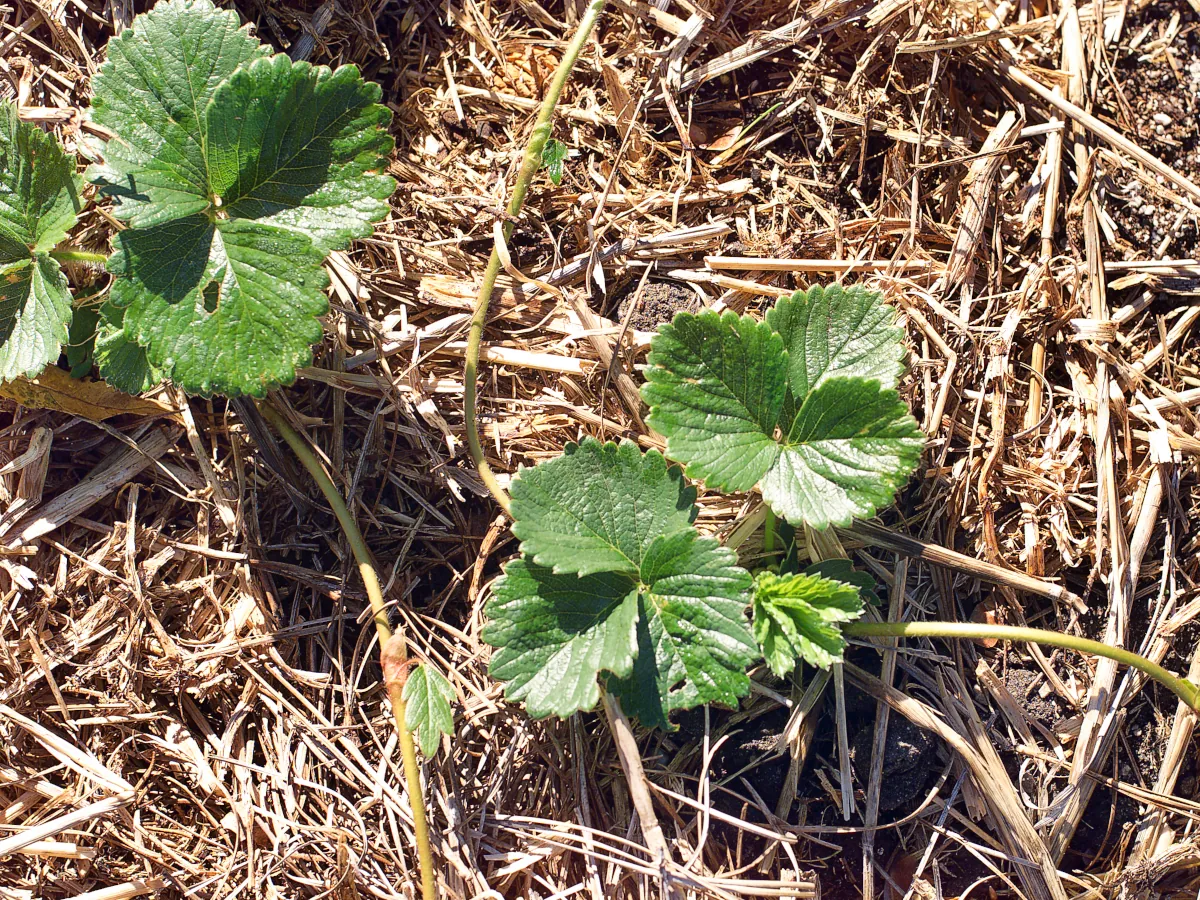
Planting your new strawberry plants
Once you have purchased your new plants, it's time to get them in the ground. It's best to plant them in your garden after all chance of frost has passed. Plant your strawberry plants on a cool, cloudy day to prevent transplant shock, which can set back plant growth.
You'll need to select a site with a minimum of 6 hours of consistent sunshine, but strawberries do best with 8+ hours of direct sun. If your garden does not have such a location, fear not. Growing strawberries in pots and containers works very well, which makes them ideal for moving around!
Raised garden beds or vertical planters are ideal for growing strawberries at home because they drain quickly and allow the fruit to hang down, making picking fruit easy. Vertical planters are great when short on space.
Raised garden beds are ideal for strawberries as they allow easy drainage and make strawberry picking simple! - Chef Markus
Let's get started!
- Pick a spot that is well-draining. If, after a rainstorm, the area is flooded or very waterlogged, it may not be the best location. While strawberries do require a good amount of water (1 inch a week) to be productive, too much water isn't good either.
- Prepare the ground and amend it with well-aged compost and manure. Strawberries prefer a PH level of between 5.5 and 7, and soil that is not too dense or clay-like.
- If planting multiple plants, dig a trench deep enough to accommodate the entire root ball without squishing it. Don't go too deep, strawberries like to have the 'crown' of the root to be just at or above ground level.
- Keep the plants at least a foot apart and keep individual rows about a foot apart to allow for the sprawling nature of strawberries. Fill in the trench with garden soil, again checking that the root crown is at or just above the soil level.
- Pat down the soil around the strawberry plants to ensure they are firmly planted. Water the plants by lifting the leaves and watering them right at the roots. Splashing the leaves can encourage disease.
- Once planted, mulch the strawberry plants with straw or newspaper. The mulch helps the soil retain moisture, especially on hot summer days, and also prevents weeds from taking hold. You'll also notice the ripe berries are much easier to pick and will be cleaner when lying on mulch than if nestled among weeds and grass.
- If you planted June-bearing strawberries, take note that they will not bear fruit the first year. Be patient and let them develop nice, strong roots for next year's harvest!
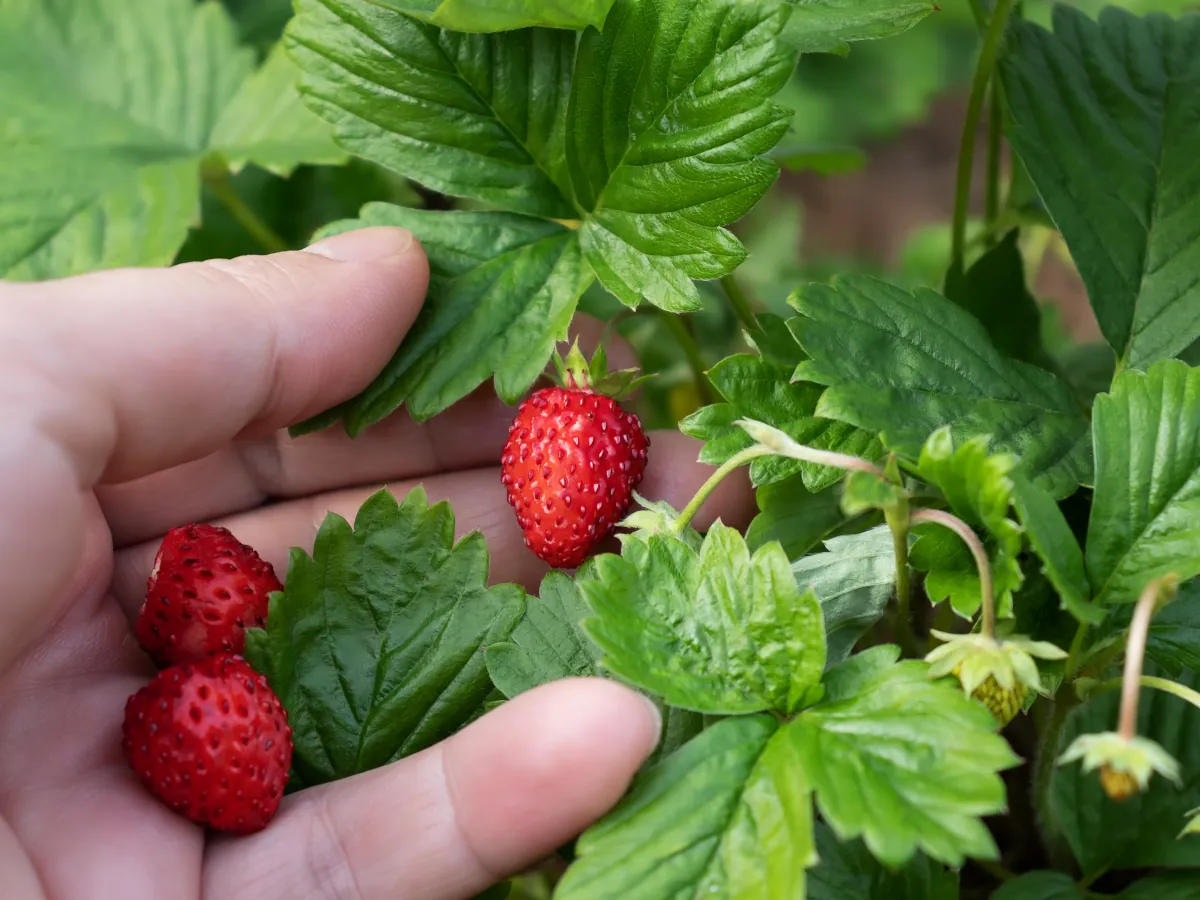
Caring For Strawberries Throughout The Year
Spring
- Spring is the best time of year to plant your strawberries. If you already planted the strawberry plants last year and this is your second or third year growing, remove the mulch or plant cover you used to protect the roots from snow and frost, once all danger of frost has passed.
- Once new leaves start to grow, mulch around the strawberry plants 3 to 4 inches deep with straw, newspaper, or grass clippings to discourage weeds.
Summer
- Depending on the type of berries planted, strawberries can start producing fruit as early as June, depending on the temperature.
- Strawberries have fairly shallow root systems, so regular weeding and watering are important, especially if growing strawberries in pots or hanging planters.
- Go out in the garden in the mornings before the sun has fully risen and remove any slugs you may find. I simply plop them in a glass of beer or water to drown.
Learn more about keeping slugs out of your garden by natural means.
- In their first year, flower buds and runners should be snipped off to encourage the development of the root system. This will encourage a larger crop the next year.
- Pick fully ripened strawberries as soon as possible by snipping the stems. Pulling the berry from the plant may damage it, so resist the urge!
- If birds are stealing your ripe berries before you get to pick them, consider using bird netting as a row cover to protect the ripening fruit.
- Ripe berries can be kept in the fridge for 4 to 5 days (unless you eat them sooner). Whole strawberries also freeze very well and are great for making freezer jam, strawberry smoothies, or strawberry sauce.
Fall
- Some varieties will continue to produce fruit in the autumn. Keep picking ripe berries, and remove any fruit that is rotten or damaged to discourage disease.
- If you plan on growing new plants from runners, now is the time to let the runners take hold and root to create daughter plants.
- In late fall, once the strawberries stop producing fruit and the temperature starts to sink, you'll notice the leaves turn yellow and droop. Once all the leaves are yellow, mow or cut them off, leaving an inch or two above the crown. Thickly cover the crowns with straw or leaves 6 to 8 inches deep to protect them from frost and snow.
Once you've got a handle on how to grow strawberries at home, you'll be rewarded with fresh fruit year after year!
Recipes to use your strawberries:
Strawberry Tiramisu with Dark Chocolate (No Bake)

Strawberry Rhubarb Crumble

Comment below if you have or are thinking about growing strawberries in your garden! If you do, take a picture and tag me on Facebook & Instagram: @earthfoodandfire.


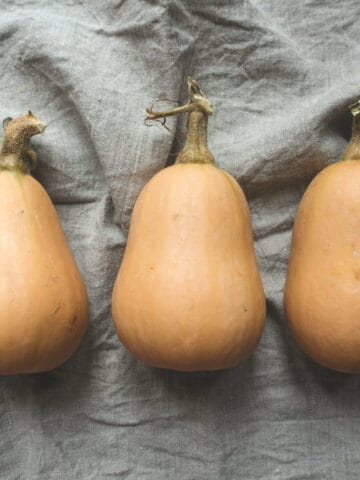
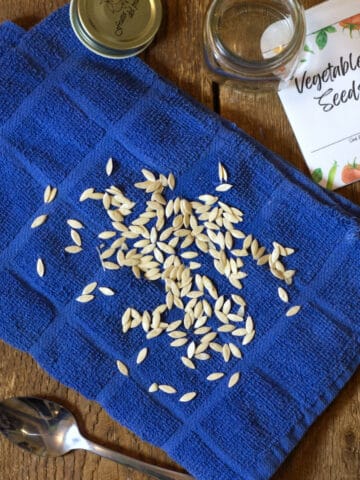
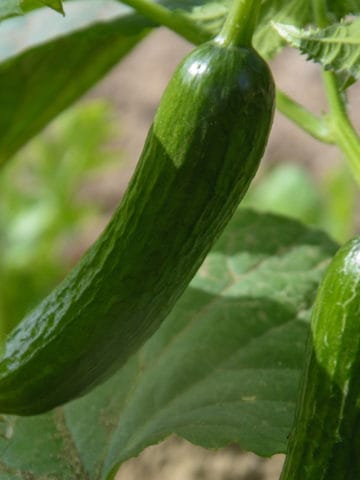
Donna
This is the second year for our strawberry plants. We have lots of greenery, some flowers and the plants have doubled in size from last year. Is this ok? Should we trim them back to get more fruit?
Chef Markus Mueller
Hi Donna,
No do not prune the strawberries at this stage. The fact that they get larger is normal and a good thing!
The only thing you may want to prune is the runners that the plants will put out middle/end of summer. These runners will start new plants if you leave them be and divert energy from the main plant.
If you want to grow your patch leave these runners to take root, and either move the new plants after or put them in pots for even more berries!